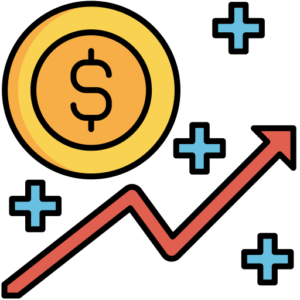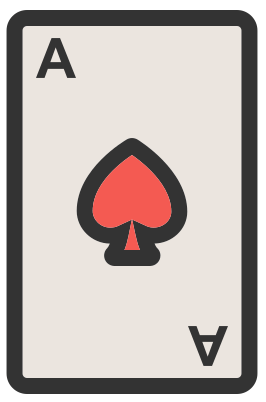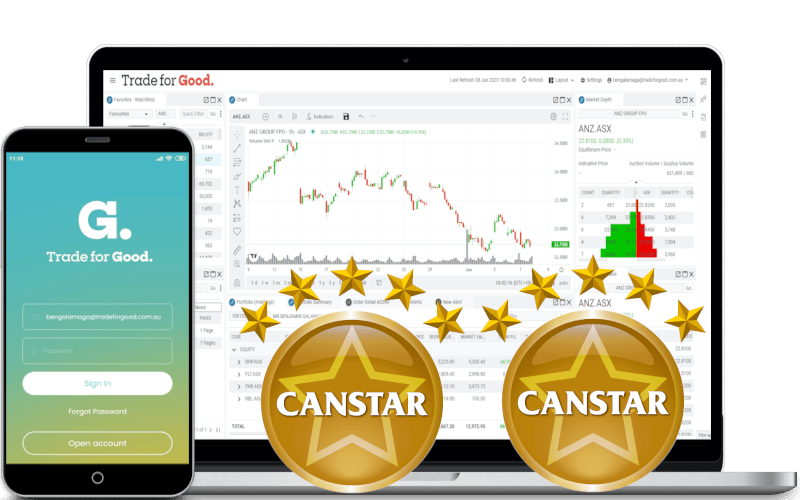How ASX Stocks React When the RBA Cuts Rates – A Guide

So you’re wondering what happens to the Aussie stock market when the Reserve Bank decides to slash interest rates? Let’s break it down in plain English and look at some real examples of what’s worked (and what hasn’t) in the past.
The Two Main Things That Happen
When the RBA cuts rates, two big forces kick in that tend to push certain stocks higher:
1. The Great Hunt for Yield
Here’s the deal: when the RBA cuts rates, suddenly your term deposits and government bonds are paying peanuts. Maybe 2-3% if you’re lucky. For people who rely on investment income (think retirees or super funds), this is a real problem.
So what do they do? They start looking at ASX stocks that pay decent dividends – often called “bond proxy” stocks because they’re kind of filling the same role bonds used to play.

The usual suspects that benefit:
Big Four Banks (CBA, NAB, WBC, ANZ)
- These guys typically pay dividends around 5-6%, fully franked
- When rates dropped from 4.75% to 2.50% between 2011-2013, banks were absolute darlings
- Lower rates meant cheaper funding costs and fewer bad loans
- CBA especially tends to be the pick of the bunch during these periods

A-REITs (Real Estate Investment Trusts)
- Think Goodman Group (GMG.ASX), Scentre Group (SCG.ASX), Dexus (DXS.ASX)
- They own shopping centres, office buildings, warehouses
- They have to pay out basically all their income to shareholders
- Lower rates make their properties worth more and borrowing cheaper

Utilities and Infrastructure
- APA Group, Transurban, Spark Infrastructure
- Boring but reliable – like the dividend equivalent of your most dependable friend
- They’ve got long-term contracts and steady cash flows


Word of warning: If everyone piles into these “safe” dividend stocks, they can get stupidly expensive. And when rates eventually go back up, these stocks often get dumped hard.
2. The Economic Stimulus Effect
Lower rates don’t just affect where investors put their money – they’re supposed to juice the entire economy. Cheaper loans mean people buy more houses, businesses expand more, and everyone has more cash to spend.

Consumer Discretionary Stocks
JB Hi-Fi (JBH.ASX)
This is probably the best example of how rate cuts can supercharge a retailer. When people have lower mortgage payments or easier access to credit, they’re way more likely to buy that new TV or sound system.
Real example: Between 2019-2021, as rates plummeted to basically zero, JB Hi-Fi’s share price doubled from around $25 to over $50. People were stuck at home, had extra cash, and went nuts buying electronics.
Super Retail Group (SUL.ASX)
They own Supercheap Auto, Rebel, BCF, and Macpac. When rates are low and people can’t travel overseas (hello COVID), they spend money on cars, sports gear, and camping equipment instead.
SUL went from about $6 in March 2020 to over $13 by mid-2021. Not too shabby.
Harvey Norman (HVN.ASX)
The furniture and electrical giant loves rate cuts because:
- Lower rates = more people buying houses = more people needing furniture
- Cheaper personal loans = easier to finance that new fridge
Harvey Norman rocketed from $2.50 to $6.50 during the 2020-2021 rate-cutting cycle.
Construction and Housing Plays

When borrowing gets cheaper, the housing market usually goes bonkers. These companies ride that wave:
Boral (BLD.ASX)
Every new house needs concrete, bricks, and cement. When the RBA cut rates and the government threw in HomeBuilder grants, construction went crazy. Boral’s share price went from around $2.50 to $7 between March 2020 and 2022.
Reece (REH.ASX)
Every renovation needs new taps, pipes, and bathroom fittings. Reece has been a long-term winner, going from about $8 in early 2020 to over $25 by 2021.
James Hardie (JHX.ASX)
This one’s interesting because they’re heavily exposed to the US housing market. When global rates were cut, housing boomed everywhere. James Hardie went from about $15 to over $50 during 2020-2021.
Small Caps and the Wild Cards
Smaller companies often get the biggest boost from rate cuts because:
- They can borrow more cheaply to grow
- Investors are more willing to take risks when “safe” investments pay nothing
- They’re often more sensitive to the local economy
The catch? They’re also way more volatile, so you can lose your shirt just as easily as make a fortune.


2019-2020: The COVID Rate Cut Bonanza
RBA slashed from 1.50% to 0.10%, and the market went absolutely mental for:
- Tech stocks: Afterpay, Xero, WiseTech all skyrocketed as people paid silly prices for growth
- Healthcare: CSL, ResMed, Cochlear did well as defensive plays with global exposure
- Retail: JB Hi-Fi and Harvey Norman had their best runs ever
- REITs: Charter Hall and others surged as property values inflated
2008-2009: The GFC Recovery
Rates went from 7.25% to 3.00%. Initially, everything crashed, but by 2009:
- The Big Four banks led the recovery (CBA was first cab off the rank)
- Mining stocks like BHP and RIO surged as China started buying everything again
What to Watch Out For
Rate cuts aren’t magic. Sometimes they don’t work because:
- If the economy is genuinely stuffed, cheap money won’t fix it
- If rates stay low too long, asset bubbles form and everyone gets a nasty surprise later
- Some sectors (like resources during 2011-2013) can still struggle even with stimulus
The key is understanding that rate cuts tend to help certain types of companies more than others, and timing matters a lot. The biggest gains often come early in the cutting cycle when sentiment is shifting from fear to optimism.
Remember: past performance doesn’t guarantee future results, but understanding these patterns can help you make more informed decisions about where to put your money when the RBA starts wielding the rate cut axe.

What you learn here has been used in our Trade for Good software.
Click on the button to find our software education videos.
You can read more of our educational articles in the Trade for Good Learn section
Trade for Good Learn


